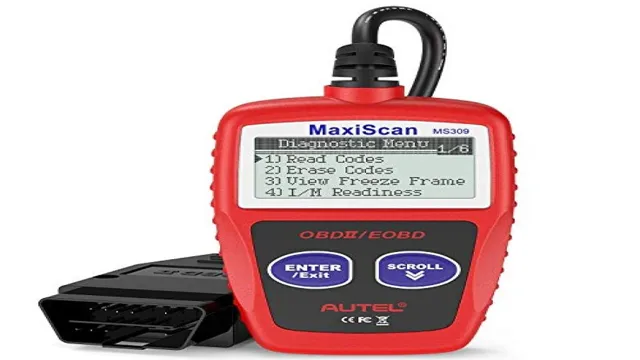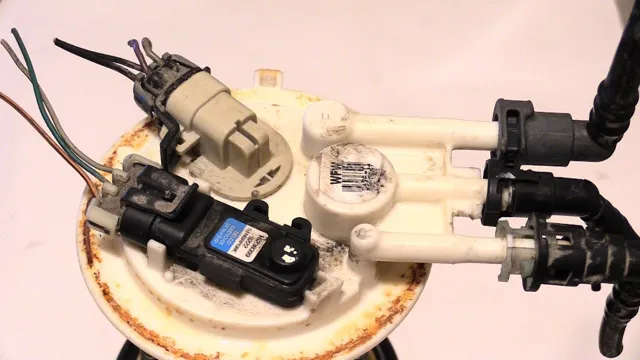Unlock the Secrets of Your Car’s Diagnostic System: Learn How to Check OBD2 Codes Without a Scanner Today!
Have you ever experienced car troubles but didn’t have access to an OBD2 scanner to check for error codes? It can be frustrating when you don’t know what’s wrong with your vehicle. Luckily, there are ways to check OBD2 codes without a scanner. Think of it as your car’s version of giving you a diagnosis without a doctor’s visit.
By understanding what these codes mean, you can pinpoint the problem and determine whether it’s something you can fix yourself or if you need to take it to a mechanic. These methods involve a bit of technical knowledge and may not be as accurate as using a scanner. However, they can still provide valuable insight into the state of your vehicle.
So, if you’re ready to take matters into your own hands and save some money on diagnostics, keep reading. We’ll walk you through some simple steps to check your car’s error codes without a scanner.
Introduction
If you own a vehicle, you might have experienced that check engine light coming on— or at least, heard people talking about it. Normally, drivers assume that they can only determine the cause by connecting a diagnostic scanner, which can be expensive and time-consuming. However, did you know that there are some ways to check OBD2 codes without a scanner? Yes, you read it right! You don’t have to be an expert to do this, all you need is a little bit of patience and some basic knowledge.
By using simple techniques such as the pedal trick, or relying on your own observation skills, you can save time and money and find out what’s wrong with your car without having to go to the mechanic right away. So, without further ado, let’s dive into how to check OBD2 codes without a scanner.
Why Check OBD2 Codes?
OBD2 codes might seem like a foreign language to those who are not familiar with the inner workings of a car engine. However, understanding these codes can save you a lot of money and time in the long run. OBD2 codes are generated by a car’s onboard diagnostic system and can reveal issues that can affect the vehicle’s performance.
By using an OBD2 scanner, you can easily read these codes and pinpoint the root cause of the problem. This information can then be used to make repairs or adjustments to ensure that your car runs smoothly. So, don’t ignore those check engine lights or strange noises, take the time to check your OBD2 codes and stay ahead of any potential issues.
Diagnostic Trouble Codes (DTCs)
As car technology advances, so too does the way we diagnose problems with our vehicles. One tool that has become increasingly popular for car owners is an OBD2 scanner. However, not everyone has access to this tool.
That’s where learning how to check OBD2 codes without a scanner comes in handy. Firstly, check if your vehicle has a Check Engine Light (CEL). If it does and it’s on, chances are there’s a DTC associated with it.
To see the DTC, turn the ignition key to the ON position without starting the engine. After a few seconds, the CEL should turn on and then off. This means the trouble code has been stored in the system.
To retrieve the code, turn the ignition key off/on/off/on and then leave it on the ON position. The CEL should start flashing. Count the number of flashes and write them down.
This will correspond to a specific diagnostic trouble code, which you can then look up to determine the cause of the problem. Though not as comprehensive as an OBD2 scanner, this method can be incredibly helpful in determining issues with your vehicle.
What Are DTCs?
Diagnostic Trouble Codes (DTCs) Have you ever seen the check engine light come on in your car and wondered what it meant? This is where DTCs come in. A Diagnostic Trouble Code (DTC) is a series of letters and numbers used to identify specific issues in your vehicle’s systems. These codes are generated by the car’s onboard computer when it detects an issue, and can be accessed using a diagnostic tool.
Each DTC corresponds to a specific problem in your car, allowing mechanics and car owners alike to quickly diagnose and repair any issues. From issues with the engine, transmission, or emissions, DTCs provide vital information to keep your car running smoothly. So, if you ever see that check engine light come on, don’t panic – just get your hands on a diagnostic tool and check for any DTCs.
How To Read DTCs Manually?
Diagnostic Trouble Codes (DTCs) When it comes to car maintenance, reading Diagnostic Trouble Codes (DTCs) is a key aspect of identifying any issues with your vehicle. Nowadays, most cars have a built-in computer system that detects and stores any faults in your car’s system. These faults are identified by specific codes known as Diagnostic Trouble Codes (DTCs).
These codes are used by mechanics and technicians to identify which part of the car needs repair or replacement. To manually check DTCs, you need a code reader or scan tool. You can either purchase one or borrow one from a friend or a mechanic.
Once you have the code reader, plug it into the DLC port located under the dashboard on the driver’s side. Turn the ignition on without starting the engine, and the code reader will display the codes on its screen. The codes are usually in the form of a letter followed by four digits, such as P030
Each code corresponds to a specific fault in the car’s system. You can find a list of these codes online, but it’s important to note that different car manufacturers may have different codes for the same fault. Reading DTCs manually can be a bit daunting, but it’s a useful skill to have as a car owner.
If you’re unsure about any codes, it’s always best to consult with a professional mechanic or technician to ensure that your car is in top condition. So, next time you suspect that something is wrong with your car, make sure to check for any DTCs before taking it in for repairs.
Symptoms And Causes
If you’re facing car trouble and want to know how to check OBD2 codes without a scanner, there are a few things to keep in mind. OBD2 codes are diagnostic codes that are generated by your car’s onboard computer system. The most common cause of these codes is a malfunctioning sensor or a problem with the emissions control system.
Symptoms of OBD2 codes include a check engine light that won’t go off, engine misfires, poor performance, or difficulty starting the car. To check OBD2 codes without a scanner, you can use a code reader or scan tool, or you can connect a jumper wire to the diagnostic connector under the dashboard. However, it’s important to remember that diagnosing car problems can be tricky, and it’s always a good idea to consult a mechanic if you’re unsure.
By addressing OBD2 codes promptly, you can avoid more serious repair issues and keep your car running smoothly.
Symptoms of Faulty Sensors
If you ever suspect that something is wrong with your vehicle, it’s essential to look for symptoms of faulty sensors. These symptoms can vary depending on the type of sensor and the issue at hand. If you notice your dashboard warning lights turning on frequently, it could be an indicator of a malfunctioning sensor.
A faulty oxygen sensor may lead to poor fuel economy or difficulty starting the engine. Ignoring these signs can lead to more severe problems down the line, so it’s crucial to have your sensors checked regularly. Causes of faulty sensors can include wear and tear, electrical issues, or simply reaching the end of their lifespan.
Don’t underestimate the importance of sensors in your vehicle’s performance and safety. By staying vigilant and addressing any issues promptly, you can avoid costly repairs and keep your car running smoothly.
Causes of DTCs
When it comes to vehicle diagnostics, DTCs (diagnostic trouble codes) are often the most common issue drivers face. These codes appear when sensors detect something abnormal with the vehicle, including, but not limited to, the engine, transmission, or fuel system. Some common symptoms of DTCs include a check engine light appearing on the dashboard, the vehicle stalling, or difficulty starting the car.
There are many causes of DTCs, ranging from simple issues such as a loose gas cap to more complicated problems like a failing transmission. In some cases, DTCs may be caused by a faulty sensor, while in other cases, they may be a result of a much more significant issue with the vehicle’s mechanics. It’s important to note that ignoring DTCs could lead to further damage to the vehicle and could even cause a safety hazard.
It’s recommended that drivers get their car diagnosed and repaired as soon as possible to avoid any potential issues.
Conclusion
In conclusion, by following a few simple steps, you can check your OBD2 codes without the need for a scanner. This not only saves you time and money, but it also gives you a sense of empowerment to diagnose and fix issues with your vehicle on your own. So go ahead, give it a try, and impress your friends with your newfound car-fixin’ skills!”
FAQs
What are some common symptoms that indicate the need to check OBD2 codes?
Some common symptoms include the check engine light illuminating, rough idling, stalling, and decreased fuel efficiency.
Can I retrieve OBD2 codes without a scanner?
It is possible to retrieve OBD2 codes without a scanner using the “paper clip method.” This involves inserting a paper clip into the diagnostic connector and counting the blinking check engine light to determine the code.
What is the diagnostic connector and where can I find it?
The diagnostic connector is usually located under the dashboard on the driver’s side of the vehicle. It is a small rectangular or square-shaped connector with multiple pins.
What do the OBD2 codes mean and how can I interpret them?
OBD2 codes are alphanumeric and provide information about the specific issue that triggered the check engine light. They can be interpreted using an OBD2 code reader or by looking up the code online to determine the possible cause of the issue.






